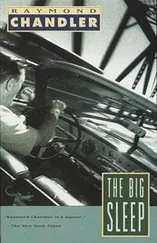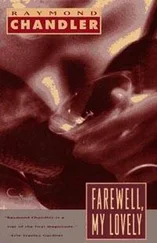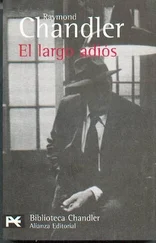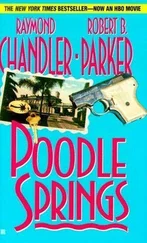This way of generalizing from the personal benefits of criticism to its advantages for a culture writ large underwrites a certain understanding of art and society that extends from Matthew Arnold’s Culture and Anarchy through the work of the great Modernists. Indeed, Northrop Frye’s position, thus stated, might itself seem too caught up in a Modernist point of view—too committed to a notion of art defined as an elitist project supported by a critical establishment, a game played between alienated artists and the knowing few, both sides deeply suspicious of the popular and the commercial. As it happens, though, Frye anticipates this objection. Here is the rest of that paragraph from his Anatomy of Criticism :
An extreme reaction against the primitive view, at one time associated with the “art for art’s sake” catchword, thinks of art in precisely the opposite terms, as a mystery, an initiation into an esoterically civilized community. Here criticism is restricted to ritual masonic gestures, to raised eyebrows and cryptic comments and other signs of an understanding too occult for syntax. The fallacy common to both attitudes is that of a rough correlation between the merit of art and the degree of public response to it, though the correlation assumed is direct in one case and inverse in the other. 32
There is nothing radical about what Frye is claiming here, but there is something attractive about his double formulation of criticism’s role, mediating between populist or consumerist tendencies on the one hand and recherché aesthetic mystification on the other.
It is at this point that we can bring together the two kinds of responses that I have been developing, both answers to the question of how to generalize beyond Richards’ efforts to ground “criticism” in the study of lyric poetry. One involves a middle way between restricting the relevant sense of criticism to “literature” and extending it across all forms of “art.” The other involves a middle way between populism (or consumerism) and aesthetic mystification. Both have some relation to the limits of Modernism and to the enterprise of practical criticism that was partly circumscribed by these limits. I can clarify what I mean by returning to Richards, who was writing in the heyday of British Modernism. Here is what he wrote in 1924, the year before he launched his project in practical criticism at Cambridge:
For many reasons standards are much more in need of defence than they used to be. It is perhaps premature to envisage a collapse of values, a transvaluation by which popular taste replaces trained discrimination. Yet commercialism has done stranger things: we have not yet fathomed the more sinister potentialities of the cinema and the loud-speaker…
[ PC , p. 31]
It would be unfair to say that Richards was interested in sustaining mystification, as Frye suggests some Modernists were. Indeed, Richards’ relation to Modernist aestheticism was complicated. It is certainly true, however, that Richards was relentlessly focused on the lyric poem as both bearer of culture, in something still close to Matthew Arnold’s sense, and as the paradigmatic object of criticism. At certain moments, Richards actually talks about cinema as if it were equivalent to, as he puts it, “bad art” ( PC, p. 189). For Richards, we might say, cinema represented the cultural problem for which the proper study of the poem on the page—practical criticism, in his narrow sense—is the solution.
In retrospect Richards’ position seems quite extraordinary. Writing across the years of the transition from silent cinema to sound cinema, with three full decades of cinematic art behind him, he treats cinema indiscriminately as though it were simply a source of mass distraction and manipulation. Even setting aside the pioneering work of Georges Méliès and the Lumière Brothers and of D. W. Griffith and Charlie Chaplin, it must be remembered that the great art films of Fritz Lang (in Germany), Abel Gance (in France), and Carl Dreyer (in Denmark) had all already begun to appear when Richards was working. Indeed, Jean Epstein, the French filmmaker and cineaste, had already developed his notion of a poetics of film. 33And Eisenstein, in the Soviet Union, was already theorizing an art of cinema by 1929.
When current critics worry about the death of criticism, then, their outlook is often limited to something like what Richards, and even Frye and Spillers, understood as criticism in the first place. Meanwhile, much critical interest—much critical energy —seems to have migrated to those domains that Richards disparaged in the cultures of film and the moving image. It’s not just that one can find thriving academic programs in cinema and media studies across the world, even at Richards’ Cambridge. Drop by any coffee shop or office lunchroom, or just pay attention to the transactions of daily life in and out of universities, in and out of domestic circumstances, and you will find that film and television make for energetic ongoing critical conversation. And before the advent of online streaming, cinephiles had begun to relish “extra features”—including critical commentaries—on material media such as DVDs and BluRay disks. In short, practical criticism is not dead. It is just showing more vital signs in some places than in others, even or especially in the scenes of everyday life. The philosopher Stanley Cavell anticipated such new directions in criticism more than half a century ago, in The World Viewed , when he noted that the example of cinema poses a special problem for Modernism and can help to expose its aesthetic limitations partly by virtue of the connection between cinema and the ordinary. 34
This shift in critical energies has itself been registered with increasing prominence in the way motion-picture media themselves represent the place of criticism in everyday life. Certainly, the cinema of the last thirty years has often preoccupied itself with dramatizing acts of criticism that range from the crudest kind of judgments to the most refined. It is possible, without much effort, to name a score of such examples over the last couple of decades, especially if we extend the scope of criticism to include music criticism. The sophistication of critical judgment represented in such films varies accordingly. It can range from Ed and Shaun choosing which records they will hurl at the zombies in Shaun of the Dead (2004) (“Purple Rain, no … Dire Straits, throw it”) to more considered performances of aesthetic judgment of the sort offered in John Cusack’s character’s top ten rankings in High Fidelity (2000). 35Many films feature critical commentary, sometimes extended and quasi-academic commentary. Think of Woody Allen’s Bullets over Broadway , with Chazz Palminteri playing the sophisticated gangster-critic who gives detailed technical advice to the John Cusack character about his screenplay. 36In Lisa Cholodenko’s 1998 film High Art , a Brooklyn woman trained in “critical theory” delivers a critical analysis on her upstairs neighbor’s photograph and invokes Roland Barthes’ account of the “punctum.” 37The figure of the critic has been fully embodied in the character played by Dustin Hoffman in Stranger than Fiction (2006), where Emma Thompson plays an author trying to kill off a character (played by Will Farrell) who doesn’t want to die, and also in Spike Jonze and Charlie Kaufman’s complex film Adaptation (2002), when the Kaufman character (Nicolas Cage) seeks advice from a screenwriting guru played by Brian Cox. 38
It also seems clear enough, for example, that the films of Quentin Tarantino and a television series like The Sopranos would not be what they are without their characters’ explicit and recurring acts of critical commentary on objects in a contemporary cultural scene in which these works themselves have come to gain a place of iconic centrality. Consider how often characters in Tarantino’s films or David Chase’s episodes become preoccupied with critical reflection on objects and events in contemporary culture: the bank robbers at the start of Reservoir Dogs (1992) discussing a Madonna song or Tony Soprano commenting on American war films. 39Sometimes the chain of reference can be extensive, as I suggest in Chapter 3, running through several works for the screen, and it can even involve cinematographic techniques that likewise, on another level, offer pointed commentary on prior works. There is such a sequence that runs from Jon Favreau’s appearance on The Sopranos back to his film Swingers (1996) and from there to the opening of Reservoir Dogs and Martin Scorsese’s Goodfellas (1990). 40
Читать дальше












